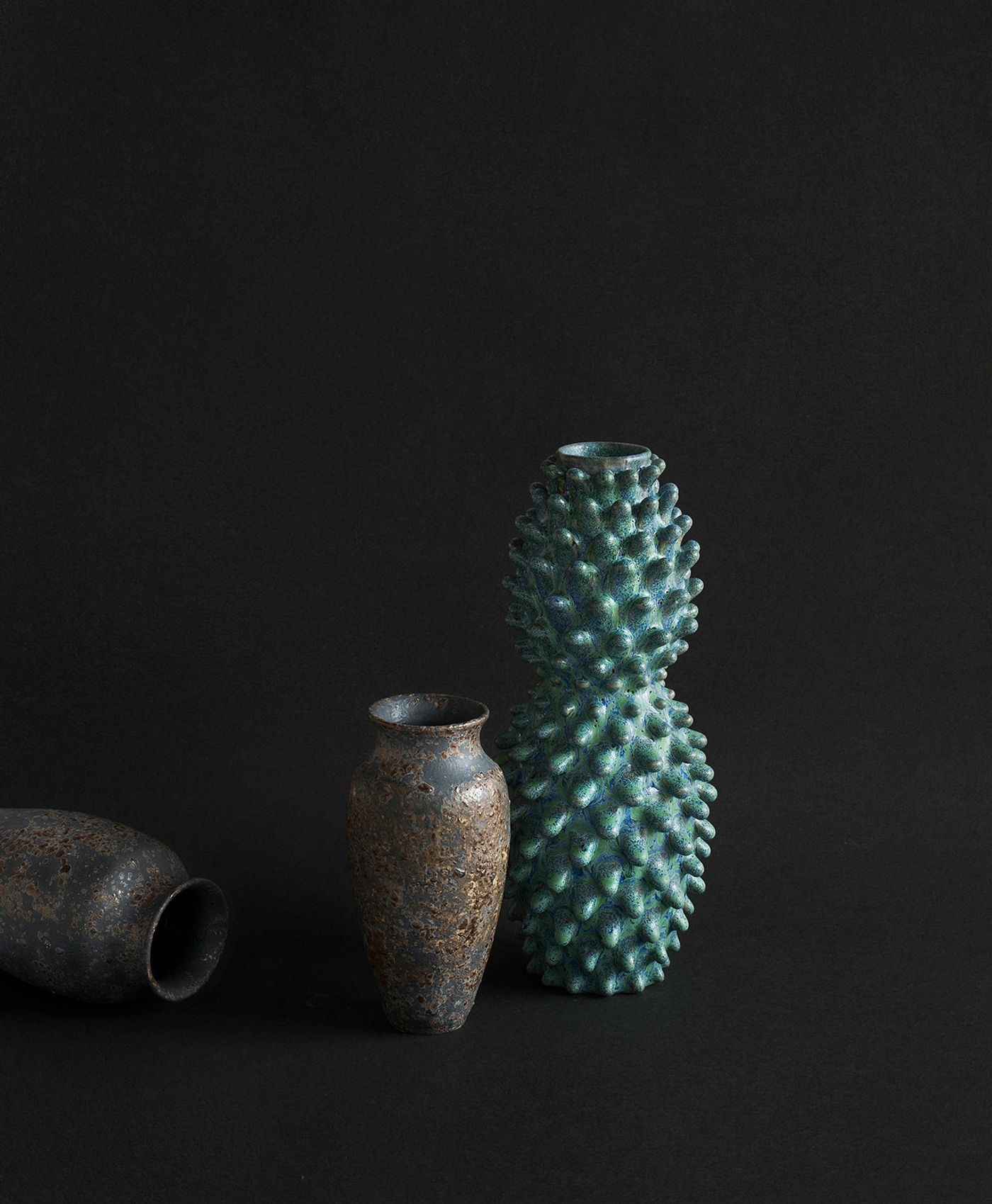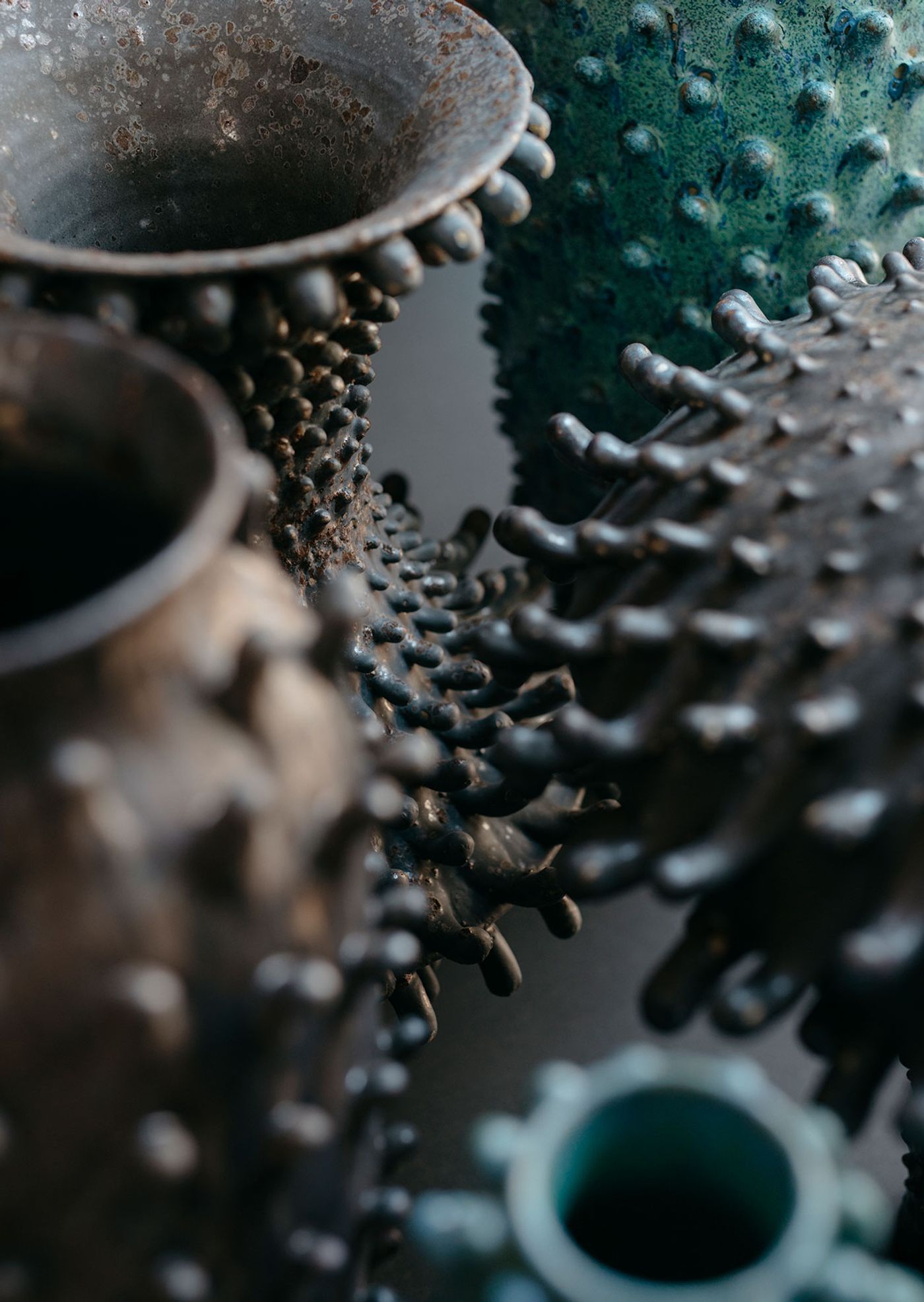
The Enigmatic Timelessness of Nicolette Johnson's Ceramics
Words by Eric David
Location
The Enigmatic Timelessness of Nicolette Johnson's Ceramics
Words by Eric David
Whether it’s a reaction to the intangible aspect of our digital age, or a consequence of the trend-setting power of Instagram, there's been a resurgence of ceramics in the last few years, both as an art form and a hobby. Perhaps it’s quite telling then that London-born, Australia-based ceramic artist Nicolette Johnson recreationally begun taking pottery classes just a few years ago as a counterbalance to her day job as a photographer. Fast forward five years and Nicolette has distinguished herself as an acclaimed ceramist artist through the enchanting sophistication and painstaking craftsmanship of her work that channels ancient forms with contemporary precision.

Nicolette Johnson, SPACEFLOWER II (detail), 2019.
Courtesy of the artist.
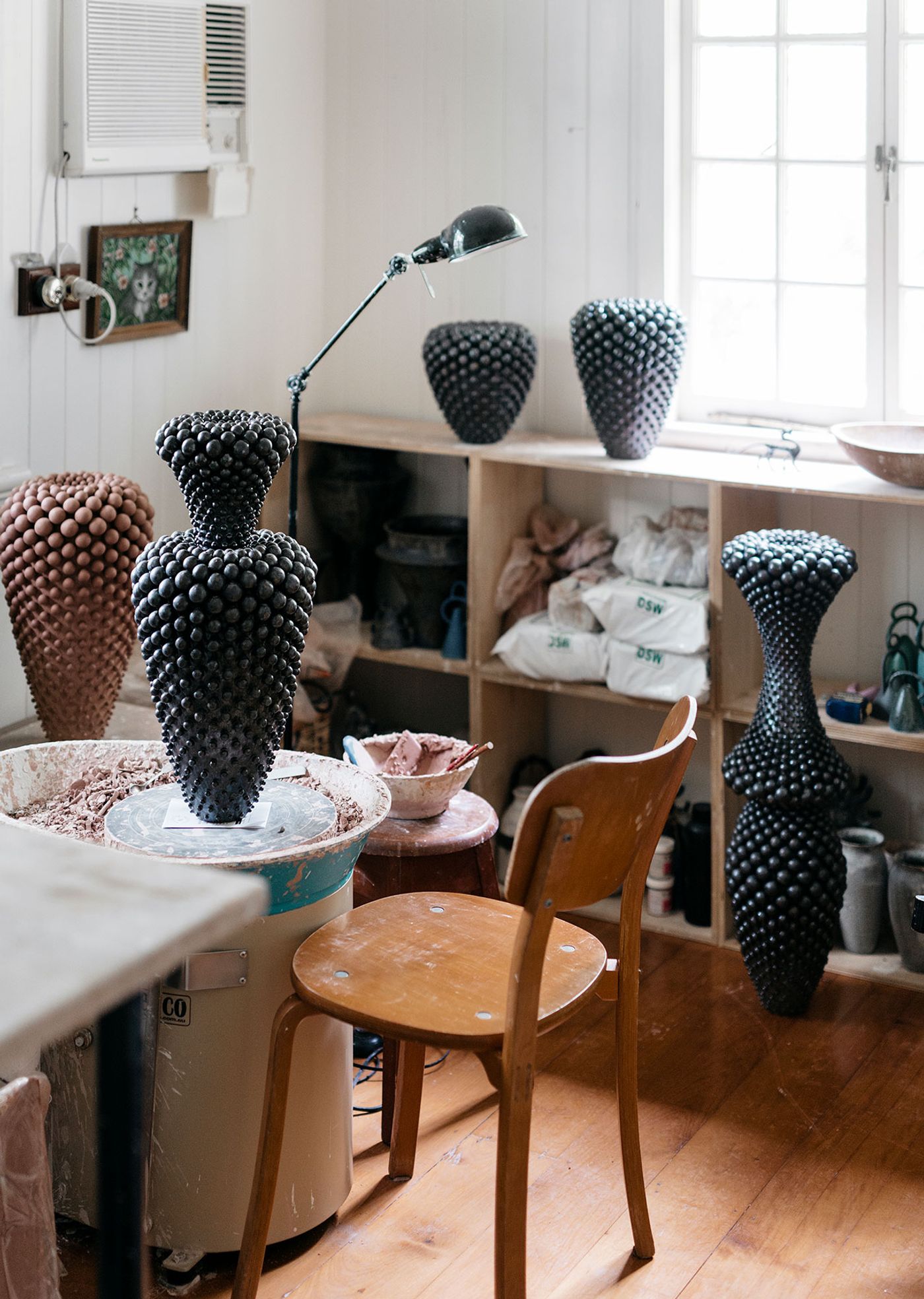
Nicolette Johnson, WORKS IN STUDIO, 2019.
Courtesy of the artist.
Straddling the worlds of arts and crafts, pottery is a millennia-old practice that has always oscillated between utility and aesthetics, function and ceremony. Nicolette draws from this tension, imbuing her ceramic vessels with ambiguity: clean, modernist lines and colours meet archaic forms, naturalistic details adorn elemental geometries, and intricate glazing layers confound provenance and chronology by adding a primeval, sometimes extra-terrestrial sheen. Hand-crafted through a laborious, almost ritualistic process, which sometimes has Nicolette individually sculpting and applying hundreds of protrusions to one vessel for days, her work transcends the dichotomy between artefact and artwork. The result is a series of enigmatic and timeless objects, whose cryptic function and obscure origin are all the more pronounced by the way they are photographed - a benefit of the artist’s former profession. Yatzer recently caught up with Nicolette to chat about her bourgeoning practice, her pathos with ceramics and her unique aesthetic.
(Answers have been condensed and edited for clarity.)
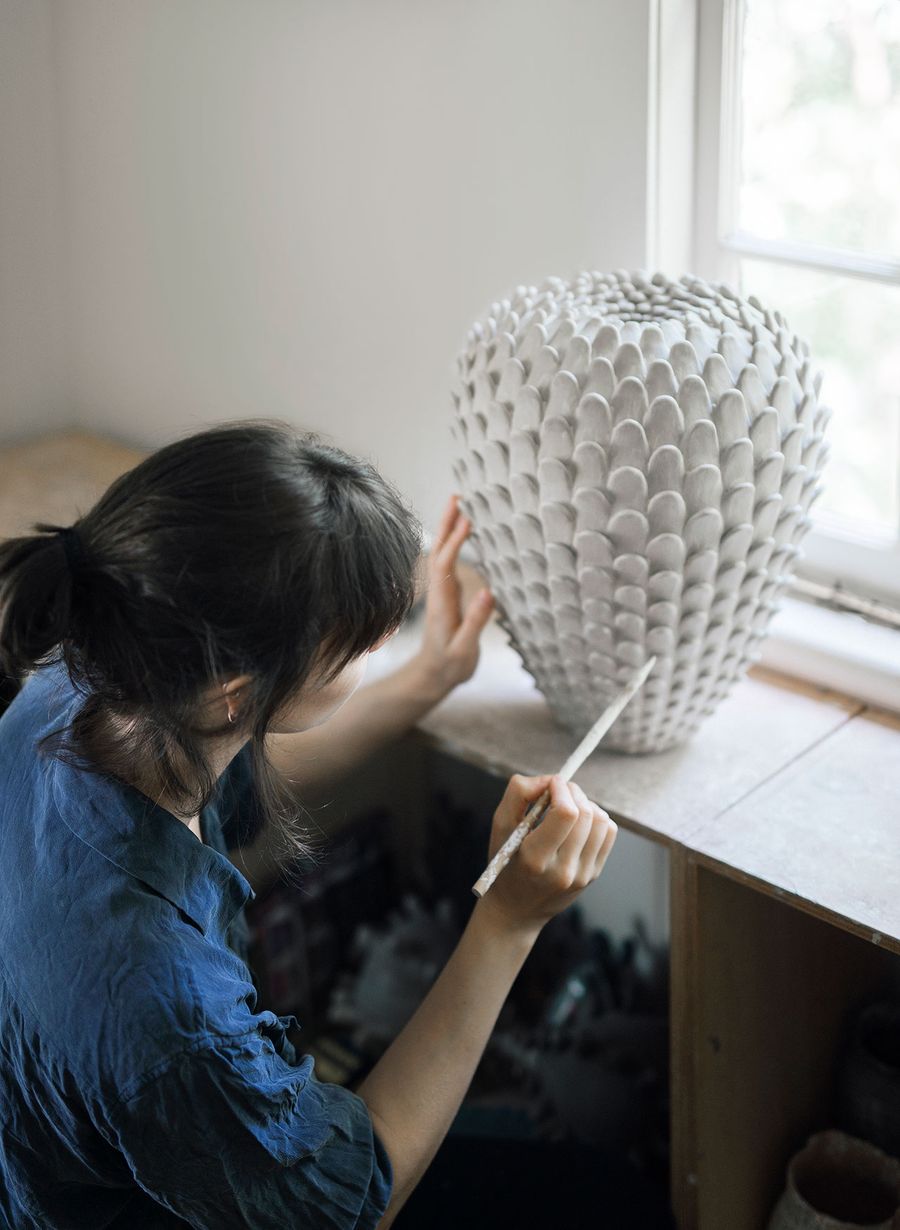
Nicolette Johnson, BLOOMING HEART, WORK IN PROGRESS, 2018.
Courtesy of the artist.
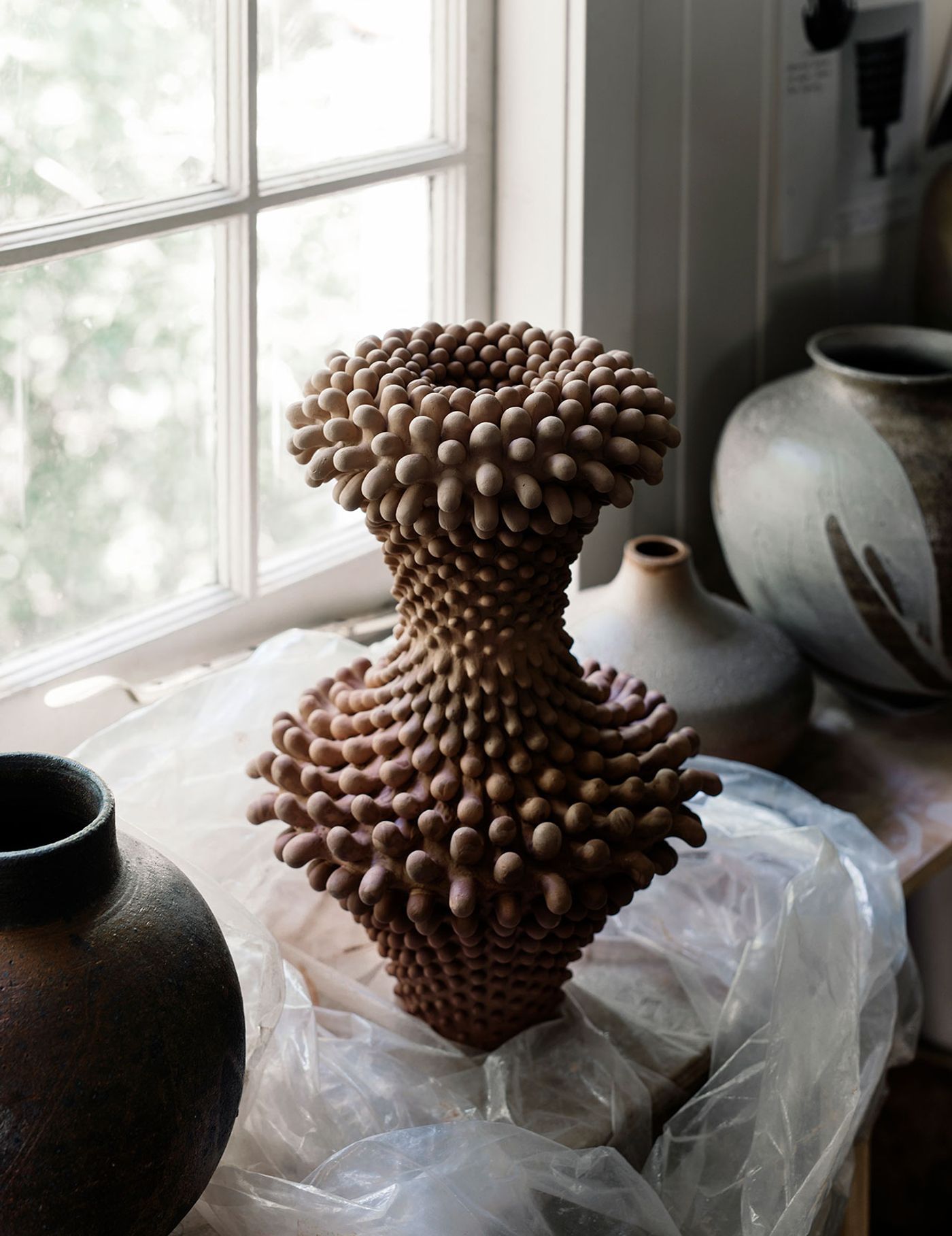
Nicolette Johnson, SPACEFLOWER II, Work in progress.
Courtesy of the artist.
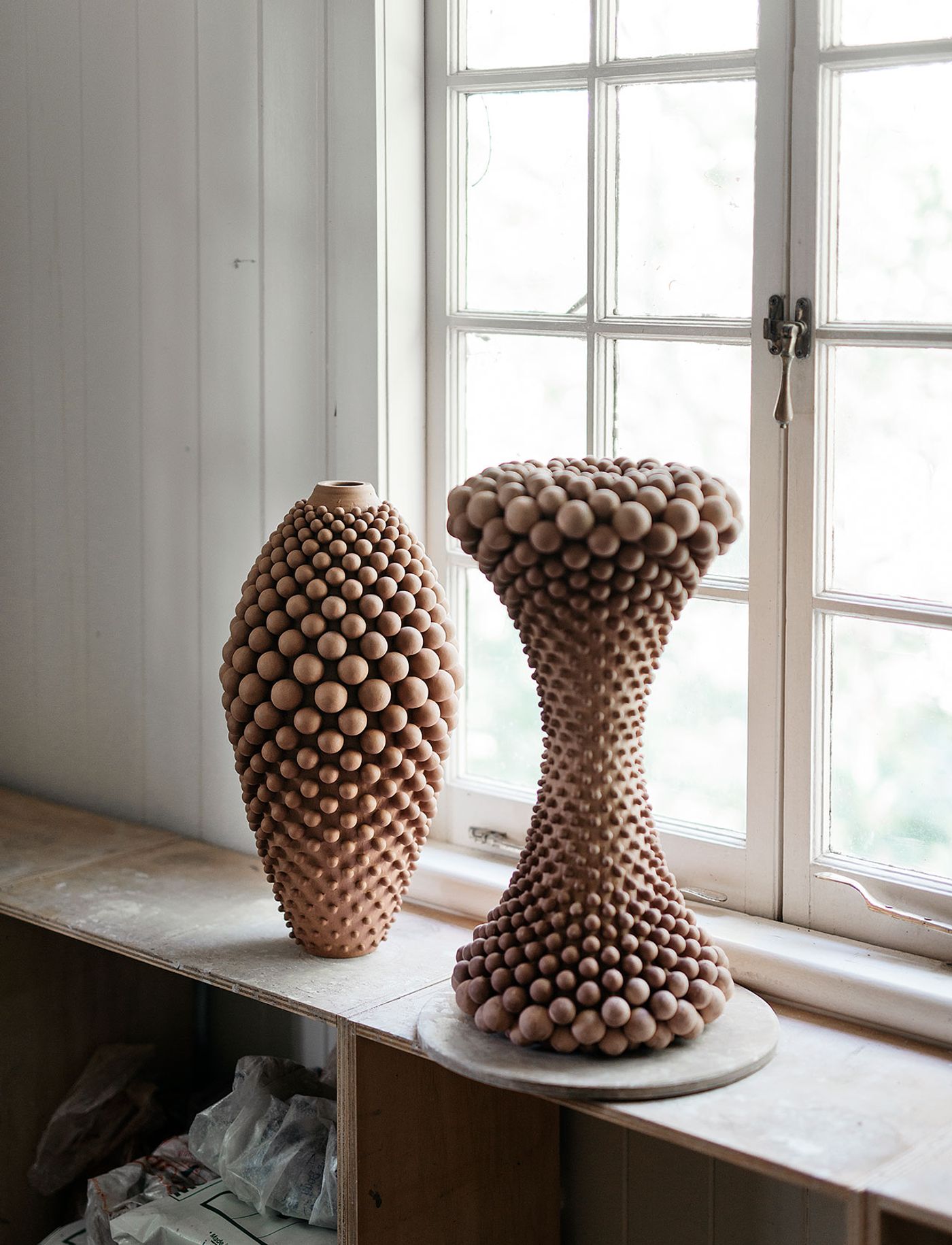
Nicolette Johnson, DARK TOWER, WORK IN PROGRESS, 2019.
Courtesy of the artist.
You have a background in photography. How did your interest in pottery come about?
My interest in ceramics started years ago through my own growing collection of pots. I would scour second-hand shops for vintage studio pottery and I always thought it would be interesting to learn how to make my own, although I didn’t start learning until mid-2015. Before that I worked as a freelance photographer, having studied a Bachelor of Photography and graduating in 2011. I enjoyed that but over the few years that I was working I developed pretty severe anxiety, and so in 2015 I decided to enrol in a weekly pottery class as I believed it would help relieve some of those feelings. I found playing with clay to be incredibly therapeutic, and learning a completely new way to use my hands as well as developing a new skill turned out to be a really good way to distract myself from work-related stress. Eventually I decided that I liked pottery a whole lot more than photography, and I officially made the jump from being a full-time freelance photographer to a full-time potter in 2017.
Your ceramic vessels are imbued with classical, modernist and surrealist references but they also channel a sense of the primordial. How purposeful is the marriage of different styles and forms? What is the overall aesthetic or sensibility you are aiming for?
I think the mash-up of references is less deliberate and more subconscious. I draw a lot of inspiration from ancient pottery as well as from reading and looking at contemporary works, which in the age of Instagram is easier than it’s ever been. Ultimately I want my work to look perhaps a little ambiguous, like it could have come from any time or place.
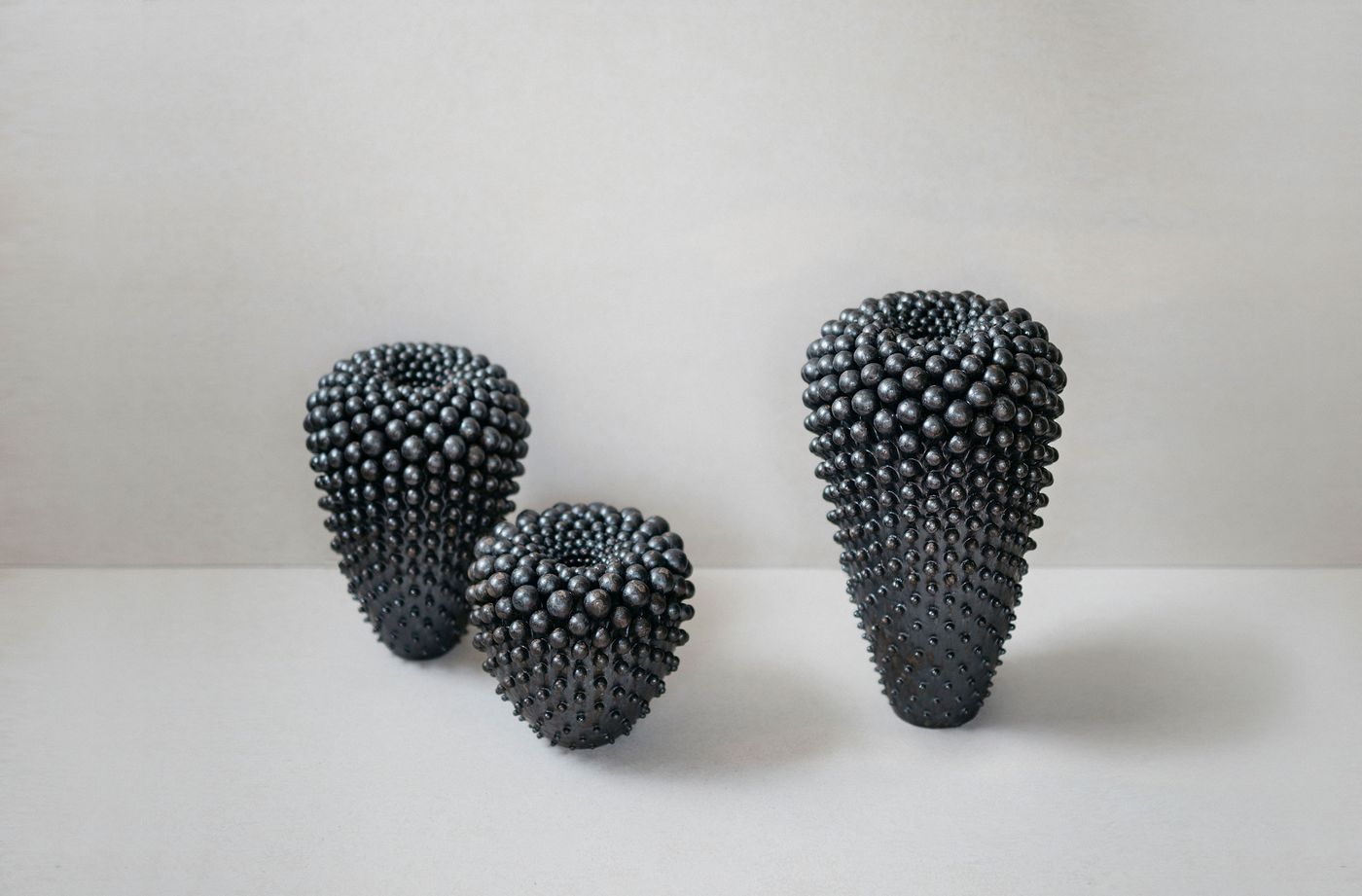
Nicolette Johnson, FLORA FATALE III, IV, AND II, 2019.
Courtesy of the artist.
You have a penchant for botanical forms with many of your works resembling fantastical fruits, stamens and cones while others feature a reptilian exterior. Where does your fascination with nature stem from?
I’m really interested in the perfect systems that are found in nature such as fractal patterns and geometric shapes. They are so satisfying to the eye and are a fun challenge to translate into an object like a vase or sculpture.
How important is symmetry in your work?
I find that symmetry is often something that comes with the territory of pottery, especially when utilising methods like wheel throwing. Even with very basic forms like a cylinder or a bowl you are going to end up with something vaguely round from above and symmetrical in a cross-section. I enjoy the visual pleasure that symmetry can create as well.
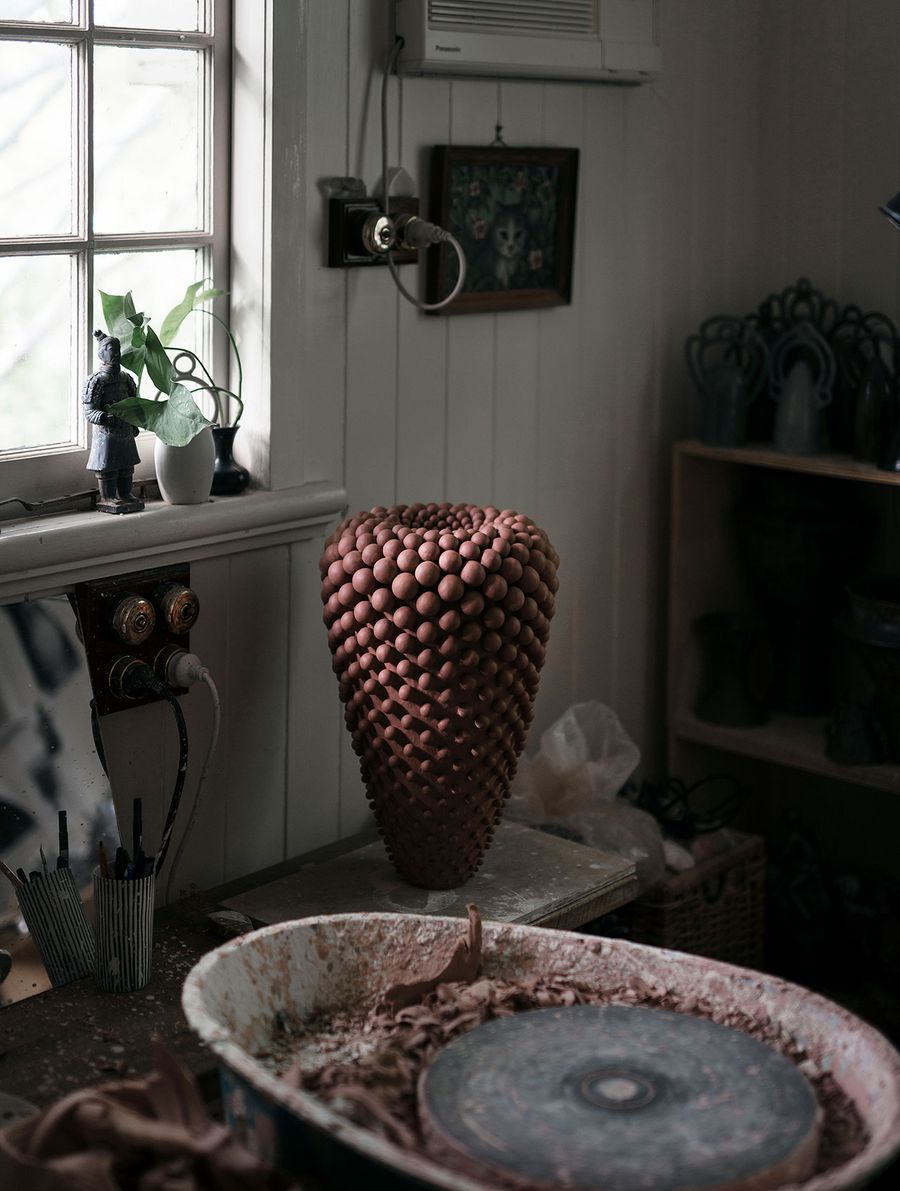
Nicolette Johnson, FLORA FATALE VIII, 2019 WORK IN PROGRESS.
Courtesy of the artist.
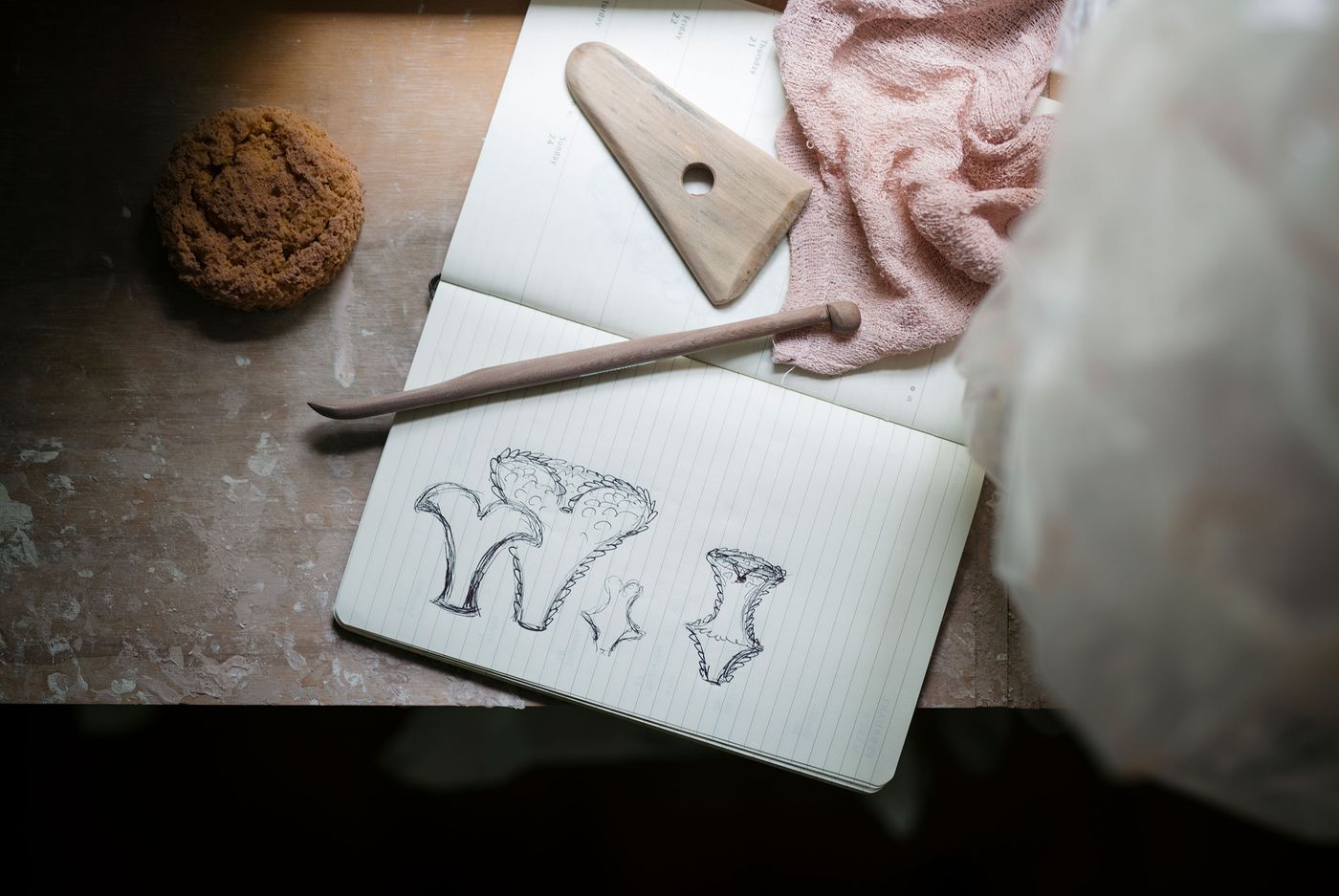
Nicolette Johnson, SKETCHES, 2019.
Courtesy of the artist.
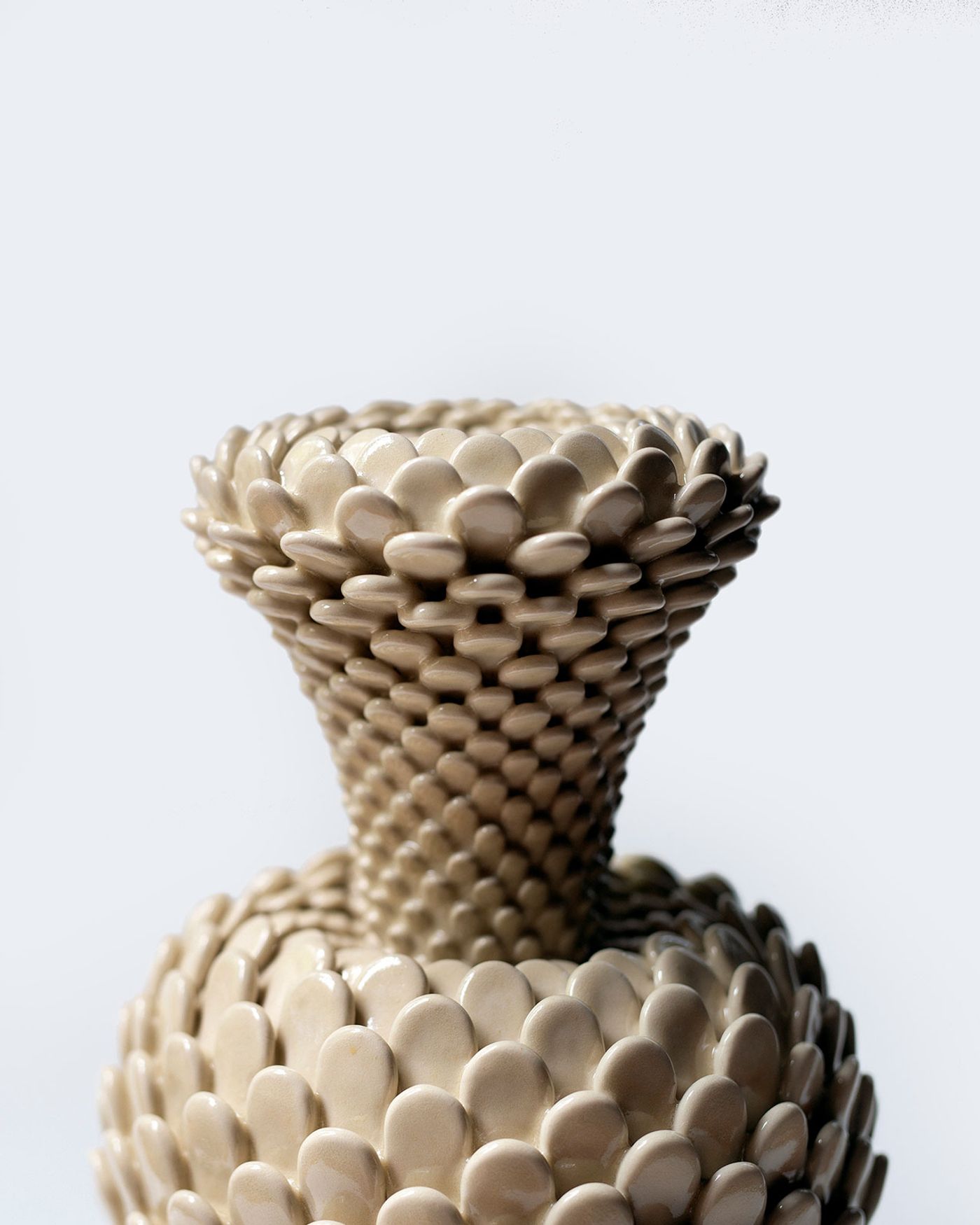
Nicolette Johnson, TOPIARY II (detail).
Courtesy of the artist.
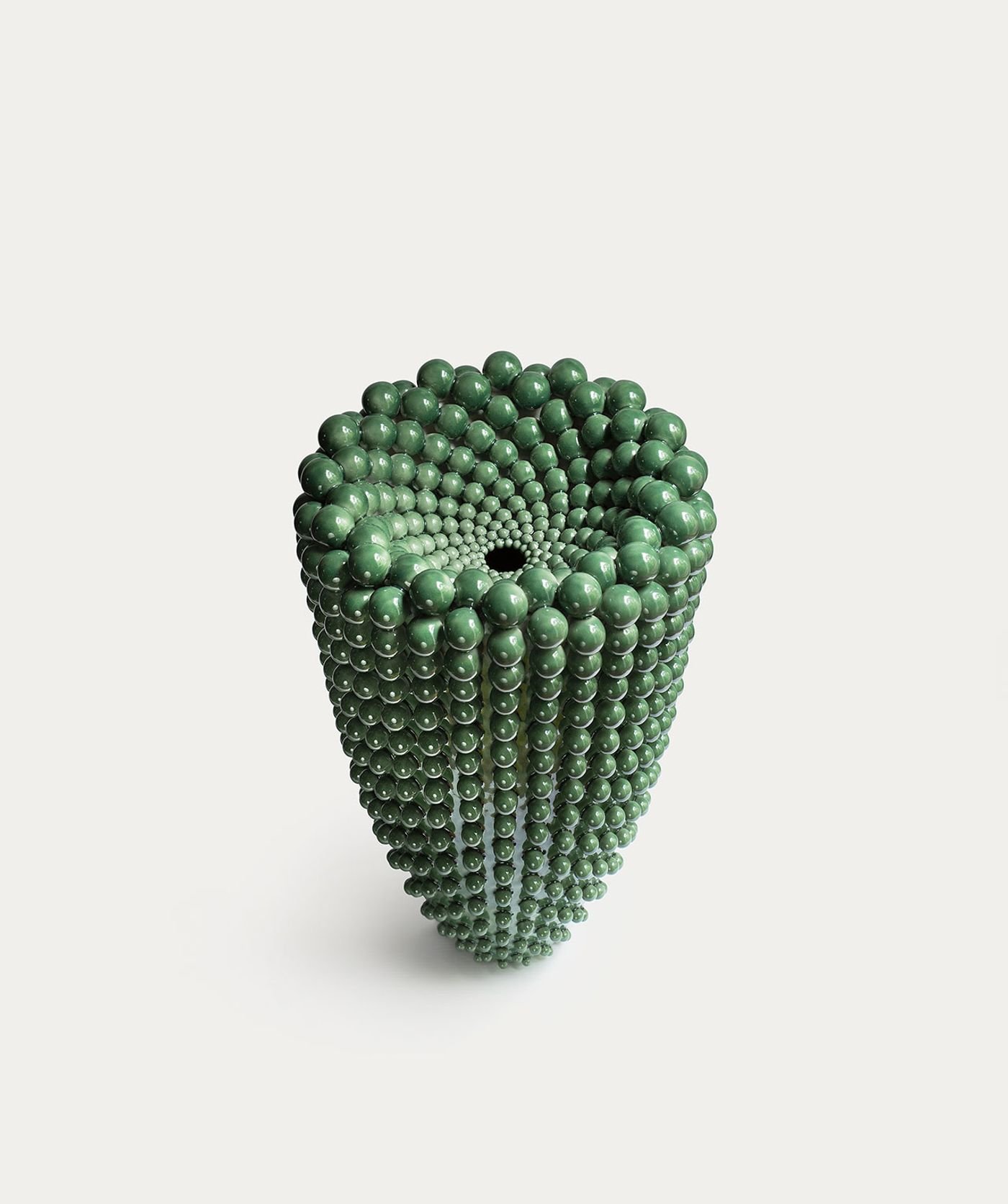
Nicolette Johnson, JADE CONCAVE VASE, 2019.
Courtesy of the artist.

Nicolette Johnson, PLATED VESSELS, 2019, WORKS IN PROGRESS.
Courtesy of the artist.
Talk us through your creative process. Do you work out every detail of the design beforehand or do you experiment during the crafting stage?
I tend to make basic sketches of works and then I dive headfirst into making them. For me there is a kind of urgency, once I have an idea, to take it from a theoretical object to a physical one. Once I am in the making process there isn’t a lot of experimentation as that mostly happens when I am sketching.
A lot of your ceramic pieces are characterised by an extraordinary amount of intricate detailing. How painstaking and time consuming is the crafting process?
Very painstaking! A large vase with hundreds of small round protrusions can take me 4-5 days to complete (not counting the weeks it takes to dry and then the nerve wracking process of firing and glazing.) I really enjoy spending this time on the work however, listening to music and podcasts as I go. The repetitive movements become quite meditative and I really like seeing the slow progression of the work in front of me.
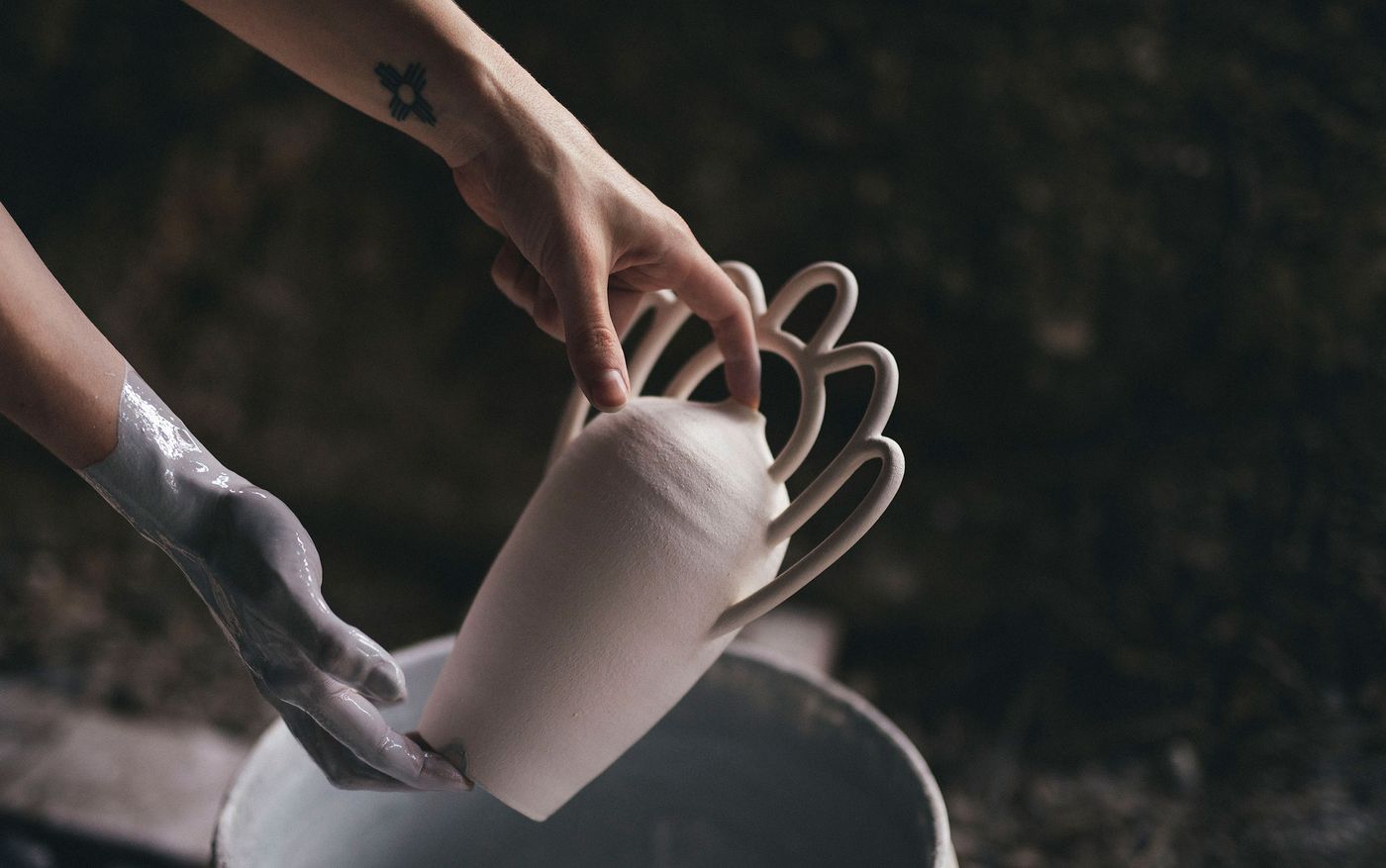
Nicolette Johnson, GLAZING SYMBOL VASE, 2019.
Courtesy of the artist.
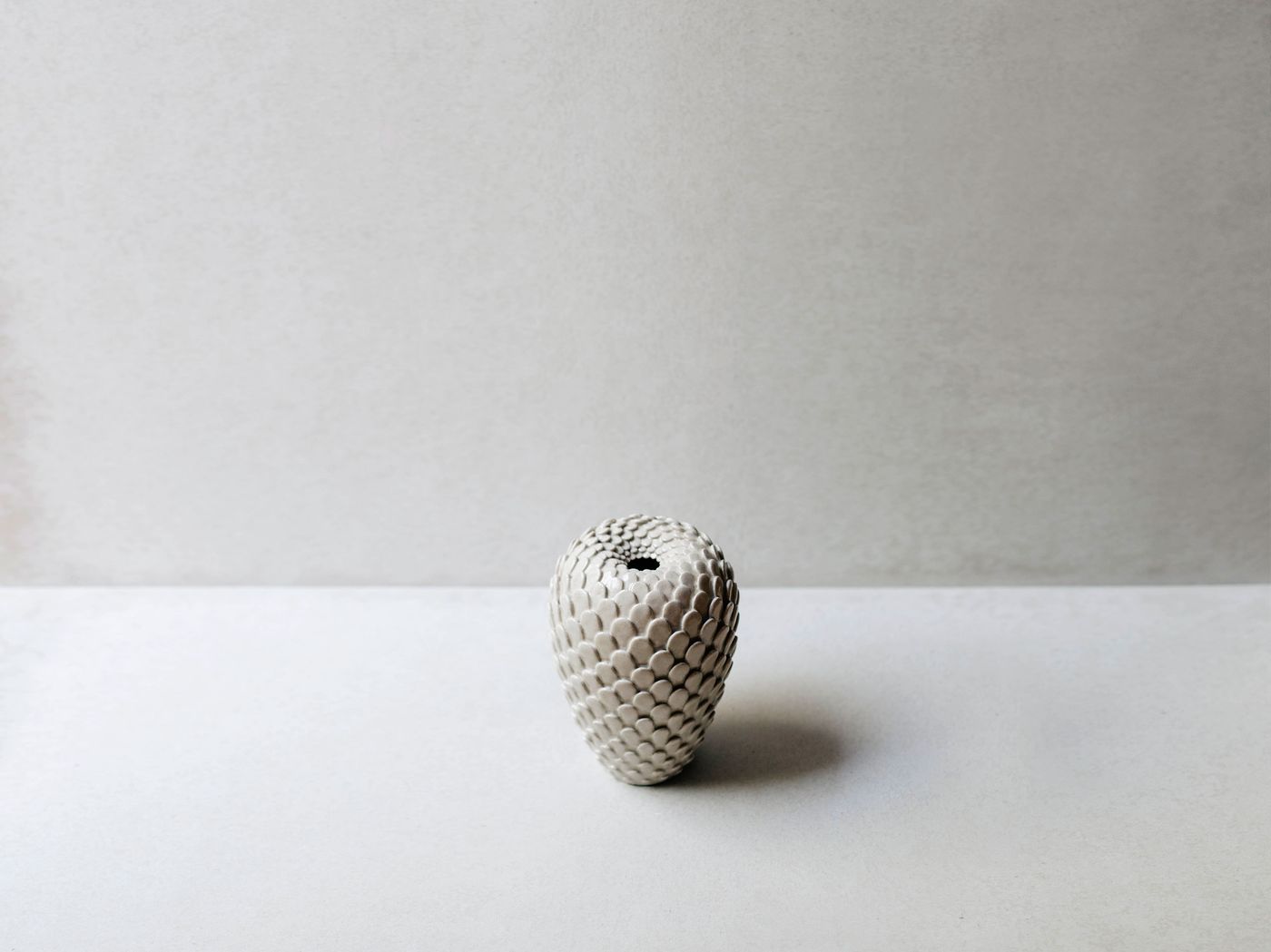
Nicolette Johnson, TOPIARY III, 2019.
Courtesy of the artist.

Nicolette Johnson, TOPIARY II, 2019.
Courtesy of the artist.
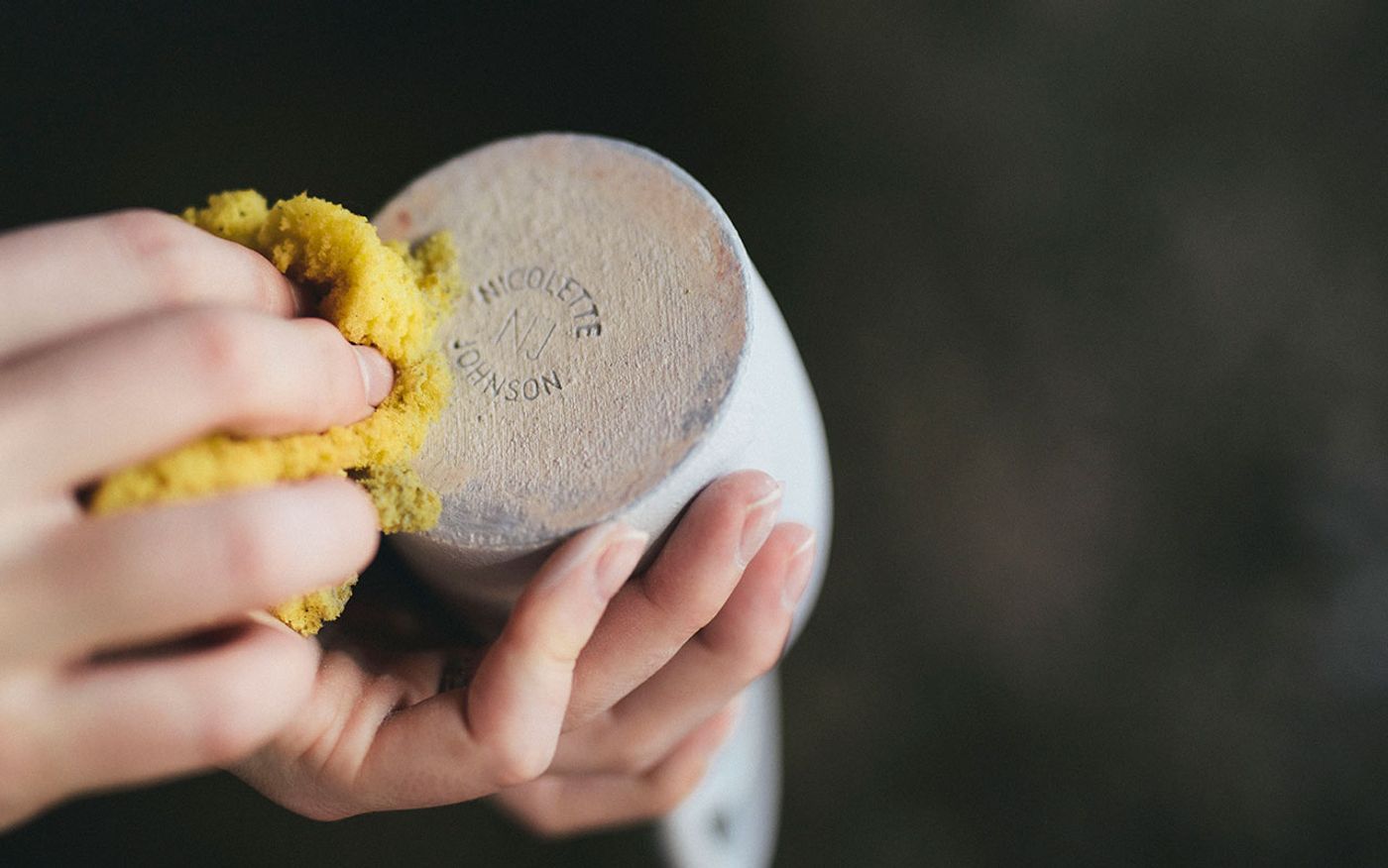
Nicolette Johnson, GLAZING SYMBOL VASE, 2019.
Courtesy of the artist.
Your work is underpinned by a heightened symbolism, evoking some strange sacred ritual or obscure ancient rite, and oftentimes resembling a chalice or talisman. Are they conceived as such or is this a product of your creative process?
While I do aim to make work that in itself is enigmatic and timeless, the result is aided by things like evocative styling and photography, and giving the work interesting titles. I think all of this helps create an aura around the work that wouldn’t exist otherwise.
You often apply intricate glazing layers that age the ceramic vessels you create, confounding their provenance and chronology. Is this your way of conjuring the stories and myths behind their design?
Surface is a hugely important part of the finished works. Sometimes the work demands a dark, organic, slightly imperfectly glazed surface while for others it calls for a crisp, glossy, jewel-toned finish. I usually know when I am making the work how it will be glazed—I always tend to have the finished work in mind before I start. It doesn’t always turn out exactly how I planned, but that really is the agony and the ecstasy of ceramics!
What are you working on right now? Any exhibitions on the horizon?
I am working towards a solo exhibition at the Sophie Gannon Gallery opening in November 2020, as well as creating a collection of works commissioned by the Powerhouse Museum in Sydney. I'm making both vases and sculpture, hoping to find an interesting dialogue between the two.

Nicolette Johnson, SYMBOL VASES, 2019.
Courtesy of the artist.
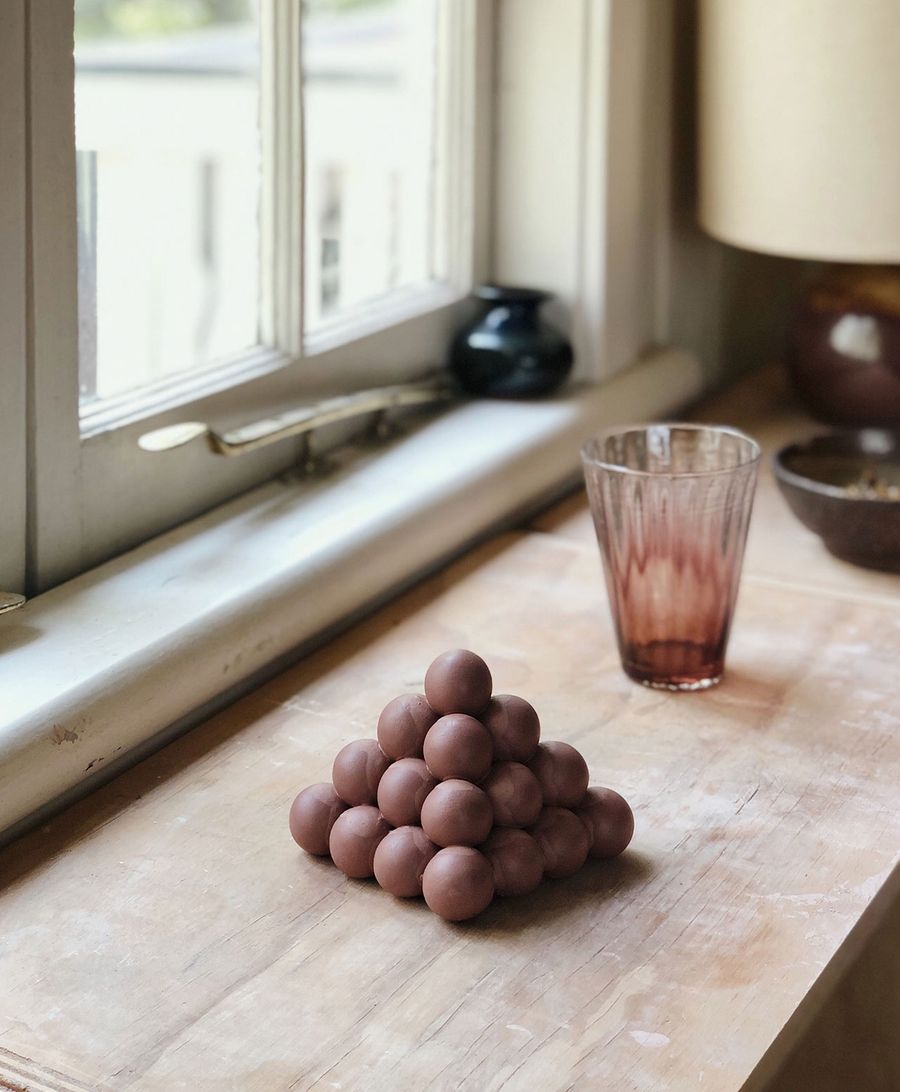
Nicolette Johnson, PYRAMID, WORK IN PROGRESS.
Courtesy of the artist.
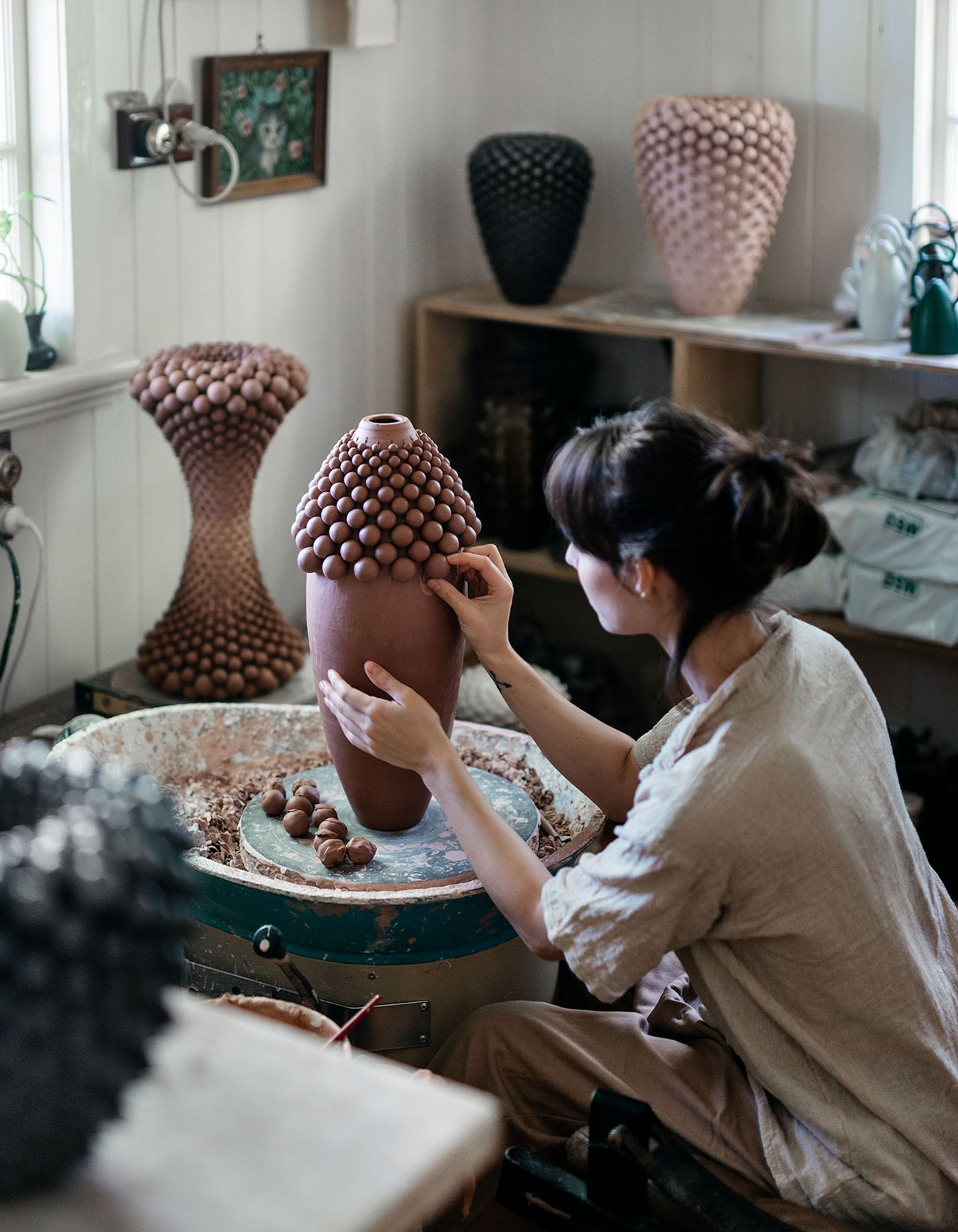
Nicolette Johnson, WORKING IN STUDIO, 2019.
Courtesy of the artist.
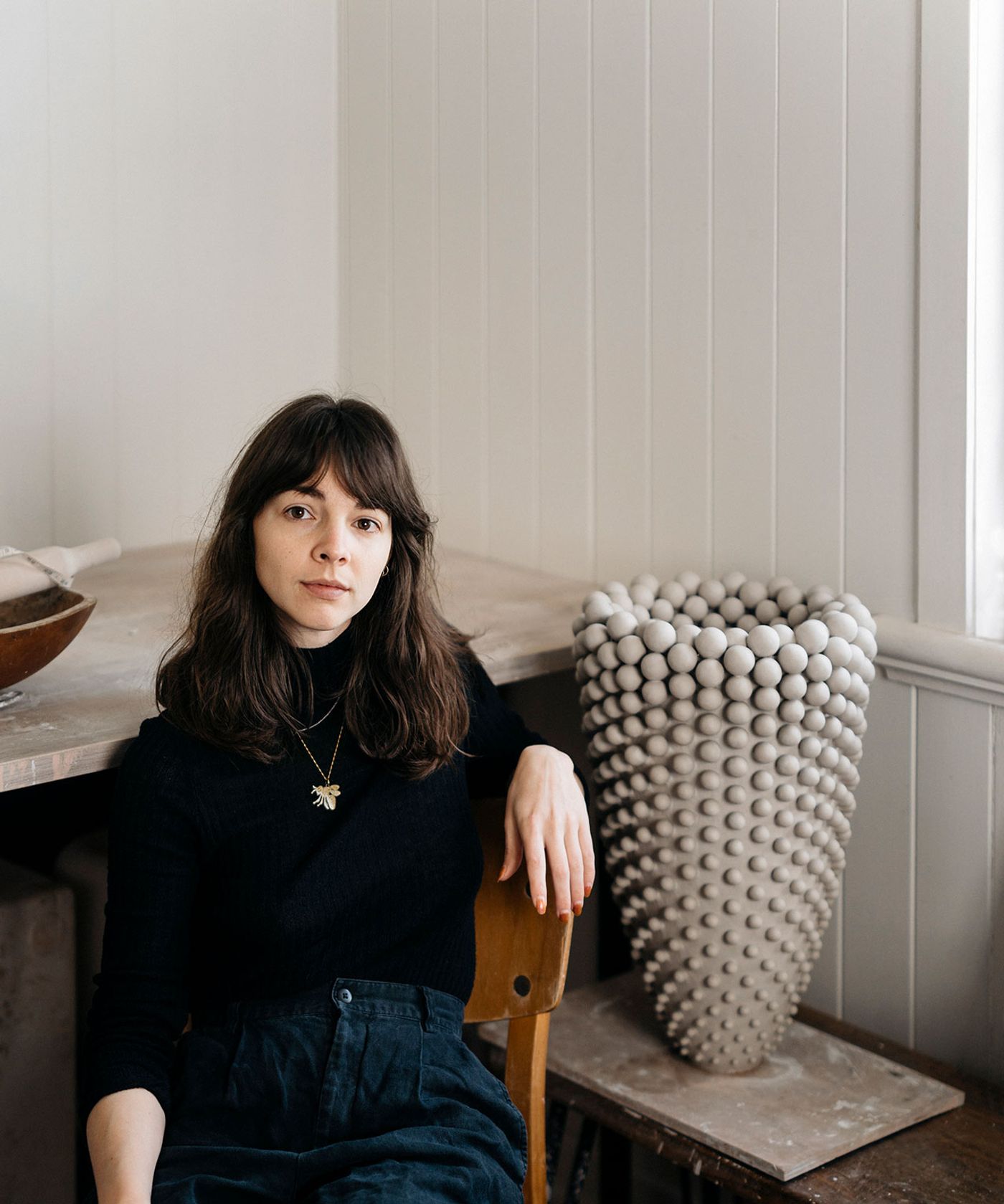
Nicolette Johnson, STUDIO PORTRAIT.
Courtesy of the artist.
